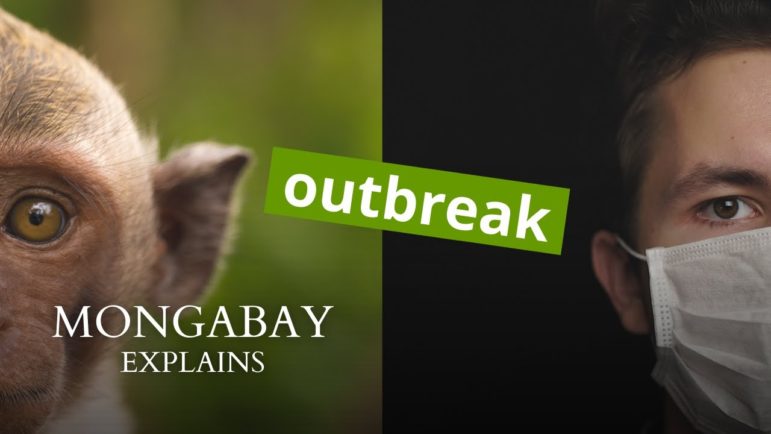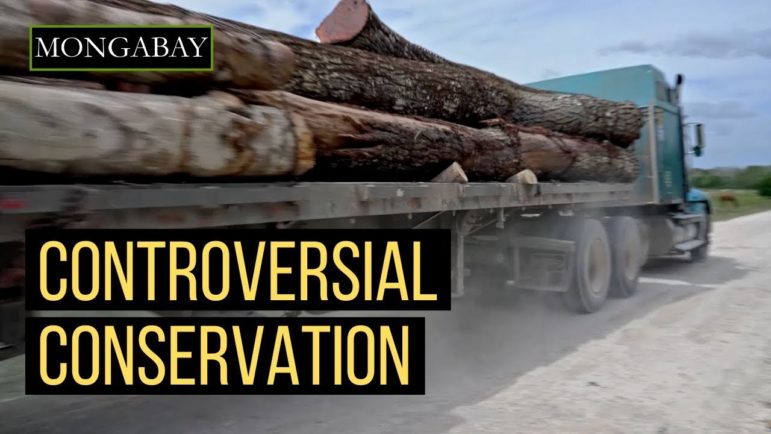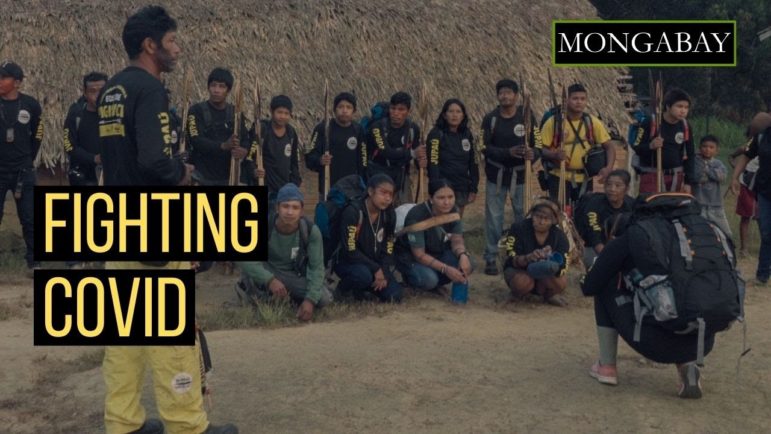In a yearlong effort, Mongabay mobilized a diverse team of Mongabay staff members and an international network of contributors to produce original reporting on the environmental dimensions of public health and community-led conservation efforts.
The coverage was global, with notable reporting sourced from Brazil, Cameroon, the Democratic Republic of Congo, Ecuador, Lebanon, Malaysia, Mauritius, Mexico, Mozambique, Peru, and Venezuela, among others. Most importantly, the coverage Mongabay produced resulted in several unique impacts.

Thumbnail from Mongabay’s video series Mongabay Explains on “What is the origin of zoonotic diseases?”
The interplay between public health and the environment
Pandemic prevention
One of the most far-reaching articles, “Preventing the next pandemic is vastly cheaper than reacting to it: Study, ” details how addressing the main drivers of zoonotic disease — deforestation, the wildlife trade and burgeoning agriculture — could prevent future pandemics and catastrophic societal disruptions. It also highlighted research demonstrating the cost-benefit of stopping pandemics before they start by aggressively funding the environmental interventions that control them.
This article was picked up by the Wilson Center’s New Security Beat and the Good Men Project, cited in Slate, translated into Spanish, and selected as the top article on the Society of Environmental Journalists EJToday headline list.
Pandemic prevention, a core One Health principle, was also conceptually present in “In harm’s way: Our actions put people and wildlife at risk of disease” and in this article from Borneo about how the introduction of palm oil plantations and urbanization brought swine flu to bearded pig populations, which impacts traditional hunters.
How an Indigenous group in Brazil outpaced COVID
As the last example demonstrates, this reportage elevated local perspectives on the environmental links to zoonotic diseases. Notably, at the start, Mongabay published a video created by filmmakers from the Uru-eu-wau-wau community in the Brazilian state of Rondônia. The video and accompanying article tell the story of how they survived the pandemic for more than a year without a significant medical case inside their territory. A feature-length documentary film produced by the same Indigenous “self-documentation team,” entitled The Territory was picked up by National Geographic and shown in theaters throughout the United States and Canada.
Community-led conservation
Apart from exploring public health and the environment, a central purpose of the reporting achieved was to identify cases where community stewardship of natural resources was the critical element enabling biodiversity protection.
Reforestation in the DRC
One example arose from the Democratic Republic of Congo, where village residents participate in a reforestation initiative in an area where land grabs are simultaneously rising.
Through the Miombo Project, implemented by the Center for International Forestry Research with multilateral support, 20 localities obtained documents signed by the provincial governor vouching for their property ownership after learning forest regeneration techniques, planting native species and valuable exotic species to enrich the forest.
However, the villagers are also aware that many will not live to see the revived forest they helped degrade, and are now called upon to restore. They must simultaneously cultivate their fields and tend to other demands in their lives. This double responsibility poses a risk to the Miombo Project and suggests alternative livelihood programs are also needed to replace income lost by reducing charcoal and fuelwood production.
Community-managed forests in Guatemala
In Central America, Mongabay published a short documentary about a community-managed forest concession surrounding Petén, Guatemala.
After Guatemala’s civil war, community concessions in Petén have achieved remarkably low deforestation rates and a high wildlife prevalence. In 2020, a proposal to replace the Brooklyn Bridge’s walkway with wooden planks sourced from this Guatemalan rainforest won a New York City Council-sponsored competition. Thus, Mongabay visited the forests at the start of this supply chain. During COP26 in Glasgow, Mongabay shared this video and another on climate adaptation among Mongolian pastoralists with Nature+ Newsroom to support a broadcast partnership with Eurovision. This amplified the voices of local government officials, conservationists, and Indigenous community members to television audiences across Europe and the globe.

Thumbnail for Mongabay documentary about a community-managed forest concession surrounding Petén, Guatemala.
Beyond Mongabay
Furthering the reach and potential for impact of this news beyond Mongabay’s distribution channels, we are aware of the content being republished by mainstream media outlets and inspired related reporting.
For instance, the story on a collaborative effort between Indigenous communities, scientists and the B.C. government to conserve caribou was highlighted by Christian Science Monitor’s ‘Points of Progress’ news roundup, which was then republished on Yahoo and included links to the original Mongabay article and quotes an Indigenous researcher who Mongabay interviewed. Other republications included those in UOL – the most prominent web portal in Brazil with more than 600 million views per month, Eco-Business, and The Wire Science, among others.
Another demonstration of Mongabay’s ability to directly engage with important audiences in conservation is its podcasts. The podcasts produced as part of this coverage provide a unique opportunity to hear the voices of environmental leaders, including Elizabeth Mrema, an Assistant Secretary General of the United Nations and the Executive Secretary of the Convention on Biological Diversity and Victoria Tauli-Corpuz, a former U.N. Special Rapporteur on the rights of Indigenous peoples and the current executive director of the Tebtebba Indigenous Peoples’ International Centre for Policy Research and Education.
Support independent environmental journalism
If you are interested in helping shed light on conservation stories such as this one, there are two excellent ways you can do so with Mongabay. First, consider making a donation, which directly helps us continue to produce high-impact journalism from nature’s frontline. Second, subscribe to Mongabay’s newsletter to get the latest environmental news delivered right to your inbox.
About Mongabay
Mongabay is a nonprofit environmental science and conservation news platform focused on providing cutting-edge independent journalism from nature’s frontline. We pride ourselves on producing reporting that has substantial, tangible impacts around the world.
